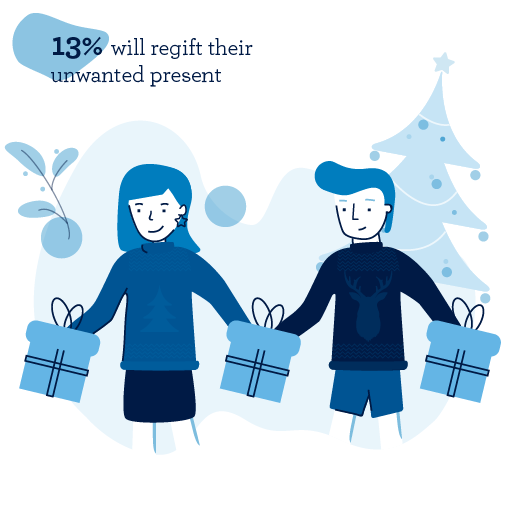Falling property prices are creating more opportunities for investors, first-home buyers and growing families considering whether to buy, renovate or detonate the dwelling in their dream postcode.
Analysis of the nation’s capitals shows pockets of value in prestigious postcodes, the next generation of inner suburbs ready for gentrification and outer-ring addresses offering good-sized land blocks and amenities.
Buyers previously squeezed out of the market by record high clearance rates and rising prices are being attracted back by lower prices, less pressure to make a decision and historically low interest rates, despite the recent round of increases.
Herron Todd White, one of Australia’s largest property surveyors, has surveyed streets and suburbs for early tell-tale signs of rejuvenation signalling bigger changes.
“It’s an excellent frieze of neighbourhoods on the grow – one weatherboard, brick or lightweight composite clad panel at a time,” says Shaun Thomas, HTW residential director. “A rising tide floats all boats, so as the housing quality elevates in your street, so too does your home’s underlying appeal and flow of equity growth.”
Renovate, relocate or rebuild decisions should be based on an assessment on the value of the existing property and what it will cost to transform into what is wanted, according to HTW director Chris Hincliffe. Then add on stamp duty, legal and marketing fees, moving costs and the personal effort involved to decide whether it stacks up.
Sydney
A well-renovated terrace in Thomson Street, Darlinghurst, recently sold for nearly $3 million about two years after being bought in its original condition for less than half the price.
Cheaper ways to add value to high-priced inner-city property is to utilise rear lane access for parking or add an attic-level bedroom or ensuite, says Thomas.
Duplex developments are increasingly popular along the south-eastern suburbs of Little Bay, Chifley, Malabar and Matraville because of close proximity to the city, surf, schools and shopping centres, he says.
The original houses, built between the 1940s and 1970s, are built on land blocks between 550 to 650 square metres and are good duplex sites.
Land and development costs typically range from about $1.6 million to $2.4 million.
Curl Curl, on the Northern Beaches, is also popular for high-quality renovations and knock-down rebuilds.
Blocks are 400 to 500 square metres and cost about $1.8 million to $2 million with rebuilds taking the final spend to about $4 million.
“Existing houses built in the 1950s and 1960s are generally less challenging to reconfigure than Federation properties,” he says.
Home extensions and granny flats are popular in the western suburbs, particularly as prices continue to slide. Popular suburbs include Lismore, Casino and Kyogle.
Melbourne
Buyers in the eastern suburbs are regularly demolishing post-war brick veneer family homes and replacing them with four- to five-bedroom houses with ensuite bathrooms and walk-in robes.
But falling markets mean there is a risk of over-capitalising, says Perron King, HTW director in Melbourne.
For example, a house bought in 2012 for about $760,000 in Balwyn, about nine kilometres east of Melbourne, was knocked down and replaced with a five-bedroom, three-bathroom mansion with a swimming pool and tennis court that sold for more than $3.4 million in 2018. But repeating the strategy in current markets in nearby Blackburn (where the average price is about $1.9 million) might be harder.
Inner-city Richmond, Brunswick, Collingwood, Abbotsford and Preston continue to be popular with renovators, investors and first-time buyers.
“The number of renovations is increasing as single and family homeowners do not want to move further north,” says King.
Semi-detached townhouses are popular around inner and outer south-east suburbs, such as Bentleigh East, for buyers seeking low-maintenance properties within commuting distance of the city.
The inner west, which includes Essendon and Moonee Ponds, are popular with renovators wanting to retain Victorian and Federation period features but ready to spend between $70,000 and $200,000 on upgrades, with an estimated one-third on new kitchens, according to the Housing Industry Association.
Geelong, about 65 kilometres south-west of Melbourne, has a varied stock of suburban housing and is becoming increasingly popular with commuters. Its suburbs, such as Geelong West, Drumcondra and East Geelong, are among the nation’s top-performing regional postcodes.
Brisbane
An influx of families from southern states seeking lower property prices and higher temperatures is boosting demand, particularly for the inner-ring suburbs of Annerley, Greenslopes and Holland Park, says David Notey, HTW Queensland director.
Annerley, about 5km south of the central business district, has plenty of detached houses suitable for young families that are “due some love”, Notey says. “The retail strip has a modicum of undiscovered cool and there are easy road connections through to the freeway and city,” he adds. Detached older properties selling around the $600,000-$700,000 mark offer a “chance to create a dream abode”.
Greenslopes, a similar distance from the city, has quality housing on generous suburban blocks, good shopping and reasonable transport.
There’s value around inner-city Paddington and Bardon “where you can usually get a bit more land for your dollar”.
Chapel Hill, about 7km west of the CBD, hosts an eclectic mix of housing that “provides interesting opportunities for those looking to upgrade as homeowners or investors”.
Perth
“There’s a good case for renovating in Perth as the four-year depression of prices is making properties significantly more affordable, especially for dual-income households,” says HTW’s Hincliffe.
Inner suburbs with median house prices of more than $650,000 for family homes are popular, he adds. These include Mount Hawthorn, North Perth, Wembley, Nedlands and Mount Lawley.
Sub-division of large lots and new builds is increasing.
Adelaide
Strong inner-ring performers include Norwood, Payneham and St Peters, says Natalie Patterson, HTW’s Adelaide residential valuations manager.
Dilapidated properties within easy commuting distance of the city can be bought from $500,000, renovated range from $700,000 to $900,000 while new builds typically range from $500,000 to $600,000, she says.
“There is plenty of upside available in a rising market for those looking to pick and flick,” says Patterson. “These properties are typically overlooked by developers because of heritage and planning restrictions and avoided by first-time home buyers who require some creature comforts,” she says.
Canberra
A buyback scheme of houses contaminated by asbestos has created opportunities for building in established suburbs.
Dozens were demolished, and the land is being resold to the market with scope for multiple dwellings.
Established areas such as Belconnen, Woden Valley and Tuggeranong, where the original homes were constructed between 1960 and 1980, are popular with renovators, according to Angus Howell, associate director in Canberra.
Blocks range from $350,000 to $1.5 million depending on size and location, says Howell. Unrenovated properties range from about $450,000 to $1.6 million.
Hobart
Rising property values are attracting many investors and renovators, says Andrew Peck, HTW Tasmanian director.
Unrenovated three-bedroom houses in northern suburbs such as Montrose are selling for about $325,000 and going back on to the market with new kitchens for more than $400,000, Peck says. “That’s worth the trip to Bunnings and some weekends with the drop saw,” he adds.
Darwin
Northern suburbs are a “hot spot” for mum-and-dad investors and first-time home buyers, says Darwin director Will Johnson.
Johnson claims prices have bottomed out and that there are opportunities to buy at “much more affordable” levels.



